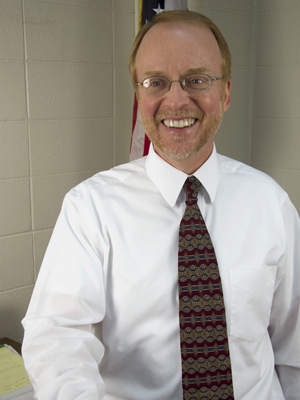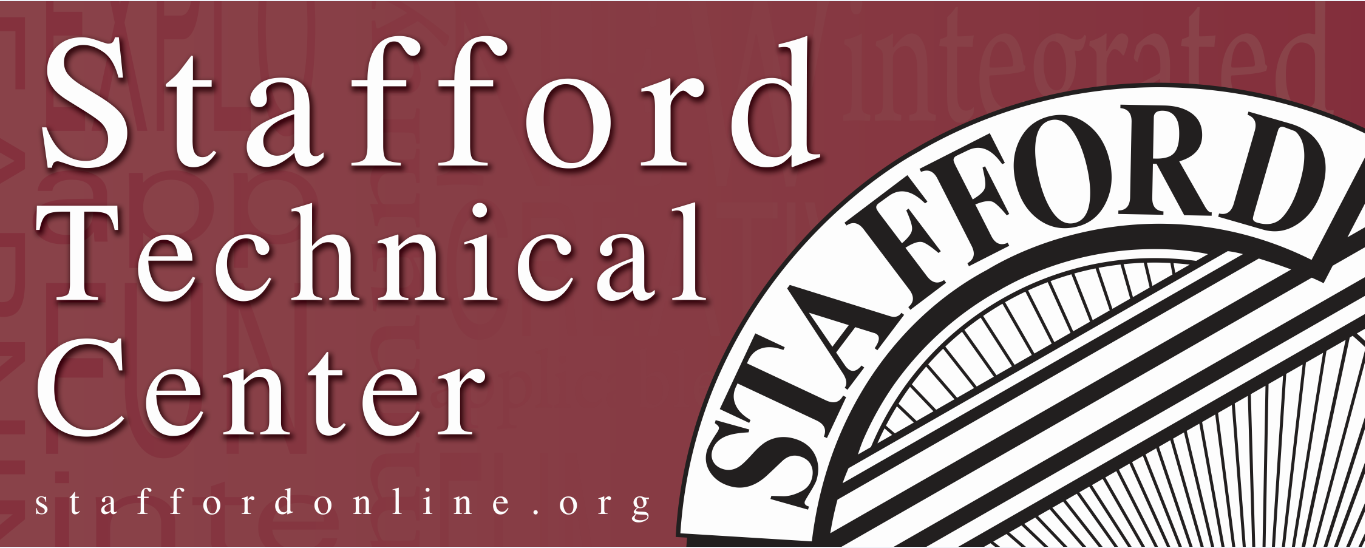 Recently, along with other people in our community, the Rutland Herald asked me to respond to ten questions about my position as director at Stafford and about the school. Following is a transcript of that interview. If you missed it in the paper, I think it’s well worth a read, not necessarily because I’m all that interesting, but because it says a lot about Stafford and why it’s a great choice for the right student.
Recently, along with other people in our community, the Rutland Herald asked me to respond to ten questions about my position as director at Stafford and about the school. Following is a transcript of that interview. If you missed it in the paper, I think it’s well worth a read, not necessarily because I’m all that interesting, but because it says a lot about Stafford and why it’s a great choice for the right student.
What attracted you to the job at the Stafford Technical Center from your career in more traditional education?
What makes technical education so exciting is that it provides practical application of abstract academic concepts. Learning becomes immediate and real. As an administrator at a technical center, I no longer am asked the question, “Why do we have to learn this?” The mission is clear. There is a need for a highly skilled intelligent work force. As the amount of information available to us outpaces our ability to know everything there is to know, it becomes imperative for the “new” labor force to know what information is important to a specific task and what information is not needed. That is where “working smart” takes on new meaning. Successful technical education programs require problem solving, collaboration with others and the opportunity to learn about and use the latest tools and technologies available. It is a very exciting time to be involved in technical education.
In the last 10 years, what changes have you seen in the requirements employers request, and the skills that students bring to the classroom?
Nothing replaces two very important ingredients to the makeup of a successful employee: Basic skills and a conscientious work ethic. Employers can train an employee on the specific skills of a job. What employers want from employees is a strong base of academic skills, including reading, writing, math and science, combined with what are often described as the “soft skills.” These are skills that we take for granted but which now often need to be taught. They include but are not limited to effective communication skills, conflict resolution skills, dedication and perseverance.
Could you define “classroom” as Stafford Technical Center sees it — what is different about your learning environment from a typical high school classroom?
The Stafford classroom comes in many forms, only a small percentage of which involves traditional desks and rows. In fact, most innovative high schools are moving away from desks and rows. Education is becoming a process of meeting standards and skills. Stafford Technical Center offers a value added education because all students have an opportunity to earn either industry recognized credentials or college credits while they are working towards their high school diploma. For example, in the Public Safety Services Program, it is not uncommon to have students graduate with more than 21 college credits. The “classroom” for Public Safety is the College of St. Joseph campus where students benefit from collegiate offerings as part of their curriculum. Students in the Health Careers Academy find their “classroom” includes a variety of Rutland Regional Medical Center departments (Women and Children’s Unit as well as the Emergency Room) and other health care facilities around the region. At the same time Health Careers Academy students are taking classes at Stafford and Castleton State College or the Community College of Vermont. The curriculum for each program dictates the space that is used, not the other way around. Technical education is fortunate to have many community resources that become the “classroom” for the delivery of the curriculum.
Tell us about some of Stafford’s alumni. What are they doing with their education and where?
We do three year follow-up studies with all of our students. A study of graduates from 2009 indicated that 64.2 percent of graduates from that year were employed and 31.2 percent were pursuing further education in colleges or universities. The data that we collect provides us feedback on each of our programs, which allows us to make changes as necessary to the curriculum. In regards to current employment, it is difficult to go to an area business without seeing Stafford alumni. When I recently visited Kinney Motors I saw Nate at the service desk. He had been in our Automotive Technology Program. When I went to a meeting at Rutland Regional Medical Center I saw Shayna, who is a nurse and former member of the Health Careers Academy. Nick is the Chef de Cuisine at the Reluctant Panther in Manchester. He had attended the Culinary Arts Program and then pursued further education at the Culinary Institute of America. Not all students stay as close to home. When I talked with a parent recently, he pointed out that his son, Doug, is in California and is working as a designer for a gaming company. He had been a member of the Digital Arts Program. What is exciting to us is that a majority of graduates continue their education or are employed in a field related to the program that they studied in at Stafford Technical Center.
What are the new STEM programs you’re about to launch? Will there really be a robotics training program in Rutland?
The acronym most heard in the halls of schools today is “STEM”. It stands for Science, Technology, Engineering and Mathematics. What educators have known for a long time is that it is difficult to create meaningful learning opportunities when academic skills are taught in isolation. STEM brings together math and science in a project based manner, using a variety of technologies, that include high interest purposeful activities. Stafford Technical Center recently received a Program Innovation Grant from the Department of Education that is intended to aid in the development of a pathway for students beginning in the ninth grade at the local high school. Stafford’s goal is to be able to open a new Engineering program in Product Design & Robotics in the fall of 2014 for which students will be academically prepared in their ninth and 10th grade years. In future years this could lead to additional engineering programs in areas such as renewable energy. Each of these new programs will involve the active participation of local business and industry as well as higher education.
How does a business partnership with Stafford begin, and how do you and your staff work to sustain it? For instance, how did the programs you work on with GE start?
Each high school day program at Stafford Technical Center has an advisory committee of industry/business leaders. Advisory Committee members help to shape the direction of the program based upon the current and future needs of a highly skilled work force in their industry sector. Half of Stafford’s programs are intended to support students by being a bridge to higher education. Those programs that support students towards careers, programs that do not require a higher education degree, still require further education whether that is in an apprenticeship program or in specific skill training. Our Evening Division supports further education for those that are currently employed. Focusing on specific industry sectors including health care, transportation and manufacturing, the Stafford Evening Division Program, supports local business and industry through customized training. When skills have been identified by an employer, Evening Division Coordinator Bill Lucci develops a curriculum and creates coursework to meet that identified need. This often results in collaboration between Stafford, Vermont Technical College and a specific business or cluster of businesses. An example of this is our most recent relationship with General Electric. This coming January a new Electronic Technician Program will begin. The program will take place at Stafford in our new fabrication lab with coursework taught by VTC instructors.
Do you think that Stafford Tech’s educational model holds lessons for the education system as a whole?
Every project and activity must have a clear connection to the world we live in. A model that is demonstrating this is the “business in the classroom model”. Most all of Stafford’s programs operate a business. The realities of cash flow, customer satisfaction and requirements of interpersonal and written communication skills take on significant meaning. Technical centers do particularly well at listening to the customer; businesses, industry, parents and students. We live in a world that changes rapidly. As a school of choice, technical centers must continually redefine our educational mission based upon current economic information. This model of change shapes our actions in the classroom requiring a close relationship between high levels of academic rigor and technical skill attainment.
What are the most important two or three principles that you hold to in your professional life?
Good teachers are an essential ingredient to the success that students enjoy. Nothing can replace the importance of interpersonal relationships in the process of education. To be successful we must embrace change as a constant in our lives. Our young people are our greatest resource.
Tell us about a mentor who made a great difference in your life. What did you learn from them, how did they teach, and how does that person figure in your life now?
That’s an easy one. I am fortunate to have great parents. My parents model patience, consistency and compassion, while at the same time making it clear that success requires setting goals and staying dedicated to achieving them.
What aspect of your job gives you the greatest satisfaction or fulfillment?
My greatest satisfaction is seeing the look of pride on the faces of students and their parents as they enjoy the results of work that has been accomplished. Imagine being 17 years old and describing to your class the events of your day that included seeing the birth of a child at RRMC, or watching your video production on the big screen at the Paramount Theater, or giving your parents a tour of the house you just helped to complete on Stafford Lane, or seeing the energy being created by the solar panels you constructed. The list is exciting and endless. Technical education helps students to develop self confidence that transfers to whatever career a student wishes to pursue.








